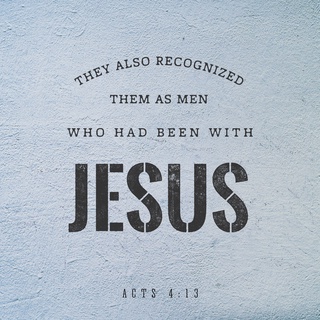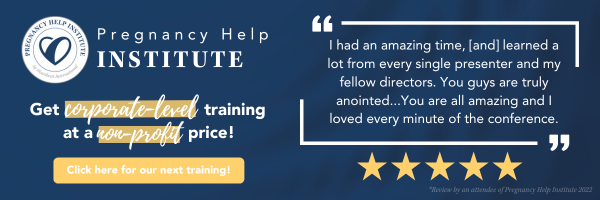Displaying items by tag: fundraising
The Golden Ticket to Financial Resilience
Presented by Valerie Harkins, Housing Specialist
The pandemic showed us just how delicate our fundraising strategies are to unforeseen events. Many nonprofits found themselves financially vulnerable in 2020 without the ability to host their annual fundraising events or apply for a specific grant upon which they had become reliant. It’s been three years since then, and the trends have continued to speak a sobering message.
Fundraising trends are on the move in 2023. With the turbulence of the economy, the unpredictability of the environment, the shift in the generation of the primary donor base, and adjustments to the new post-pandemic norms, homes are finding that—now more than ever— they have a critical need for diversified revenue streams. Overall, we have seen a national increase in donations; however, this has been matched with an even greater decrease in purchasing power, frequently resulting in a realistic net loss for organizations. As is common during times of economic hardship, the number of individual donors on average has decreased with an increased amount per monetary contribution made. This means we have fewer people making contributions but larger individual contributions, creating an elusive financial projection that appears strong at the bottom line but is built upon what is likely akin to a Jenga tower.
Financial resilience is the golden ticket to stability in this season. This necessitates fundraising strategies built upon multiple revenue streams. A personal recommendation is to maintain an average of five sources of income. This provides you with a broad donor base and the gift of time when catastrophe strikes. Examples include minor events, major events, monthly donors, and grants. To learn more, check out our webinar Diversifying Your Home’s Revenue Streams where we take a deep dive into this topic. And there is no time like the present to strengthen your funding strategy by getting in on the Development Tack at Pregnancy Help Institute. There’s still time!
Storytelling and Statistics
by Cindi Boston-Bilotta, Vice President of Mission Advancement, Heartbeat International
You are incredible change-makers in your community. You plan, follow through, inspire, sacrifice, lead, and come alongside women who will make life-and-death decisions. Their lives are changed forever because of what you do!
But how do you communicate success to your financial partners?
A 2022 Stanford Social Innovation Review study gave a comparable view with metrics shifting donations from charities with only a good pitch to those with supportive results. When combined with a good pitch, including “features” of an organization, metrics create a winning combination. More than 70 percent of surveyed donors said they care about metrics.
Interesting! Donors desire an emotional connection to their giving and want data-driven investment. The goal of donor care is to respect the interests and passions of donors. But how do you communicate the success so your financial sponsors so they can grasp the storyline in statistics? We show change through storytelling and relevant metrics to show return on investment.
When storytelling and statistics are combined in publications, articles, thank you notes, public relations, and conversations, your donors will grow a stronger connection to your organization as you show evidence that their investment makes a difference.
With a healthy donor care plan, several critical components must be in place to create strong donor relationships and trust. The Donor Loyalty Cycle, created by Veritus Group, gives us a glimpse:

In every stage, metrics complement storytelling to assist a donor in understanding the mission and the donor’s role as a change-maker. Here are a few examples:
Create Awareness – share the need – use community health department data to prove the need of the population you serve – the number of pregnant women, an estimate of women using chemical abortion, the long-term impacts of fatherless families or under-educated single moms, etc. Prove the need and then show how your programs will impact for the better.
Ask – match the interests of your donors with your programs. After showing the need, use data to predict your impact if you were to start or upgrade a program. Inspire a donor by matching their interests to a program growth goal. If they love the Ultrasound program, give stats showing a greater rate of life choices after an ultrasound. Then, share a moving story to bring in the emotion of a powerful story.
Acknowledge and Affirm – contact financial partners early and often about how their investment changes lives. Donors want to know how metrics reveal a conversion for your clients. Statistics open the eyes of a donor to the relevance of their gifts. They can see the impact on your clients. They are helping create a hopeful future for families.
Report – communication reminds sponsors that their monthly gift, quarterly pledge, or donation to a specific need or program will give them a sense of purpose and create an in-depth view of what their funds have accomplished through quotes, stories, pictures, and return on investment.
Motivate – inspire so donors are moved and consider giving again. They will see the impact of their gift and, as you give them new opportunities to provide again, will likely re-invest in your programs.
A written and verbal report can balance emotional stories, quotes, and incredible outcomes. Recently, a Heartbeat donor cried as he related to the desperation of a client's story. The stories and stats reminded him that we are creating safer spaces for moms, dads, and babies. We are preserving the branches of family trees. We share the love of Christ on behalf of donors who may never meet the clients they help. Change, shown through stories and statistics, inspires and motivates our generous donors.
Stories and statistics are a dynamic duo used to create interest, develop loyalty, and inform our financial sponsors that they are vital to our mission.
Development Director
Heartbeat knows that the job of a Development Director is never done. That's why we have a number of opportunities for training and ongoing support built just to help you build relationships and raise funds for your organization.
Development Director resources from Heartbeat International:
- Pregnancy Help Institute - Development Track
- Banquet Planning from Scratch: Recipe for Success
- Firm Foundations
- Advancement Trends in the Life Community (monthly newsletter, including a thank you note to use for your supporters)
What’s Your Story?
“And it came about that as I was on my way, approaching Damascus about noontime, a very bright light suddenly flashed from heaven all around me.” Acts 22:6
Servants of Excellence
As we know, the Bible is full of stories. The Old Testament tell us story after story of everything from the first sin, to the rise of Israel, to heroics and failures of people like Samson, David, Solomon, Ruth and so many more.
The New Testament tells us the story of Jesus, including the stories he told. And, we also see stories of those who followed Jesus . . . and the stories they told.
Do we see a pattern here? Sharing our faith almost always begins with stories. And there is no greater example of this than Paul.
Yes, the Paul, the great theologian who gave us so many New Testament letters. The Paul who gave us everything from the great doctrinal book of Romans to the love chapter in I Corinthians 13. That Paul.
His faith began with a story. One place he tells his story is in Acts 22. Defending his work before the Jewish council, Paul launches his story by recounting his advancement in Judaism. He mentions (v. 3) his education under the great Gamaliel, and his zealousness in persecuting that ragtag bunch of heretics known as The Way (v. 4).
But, Paul’s story shifts on the road to Damascus, where he met the man he was persecuting. Jesus. Paul tells of a bright light, of being blinded and falling to the ground. And, he tells of a life-changing conversation with a man he thought to be dead, which turned him from persecutor to a promoter of this new faith.
Reading Luke’s account of Paul telling his story, we see his listeners throwing fits of anger. This says much more about Paul’s listeners than his story. Because as we know, Paul told his story to people everywhere, launching churches all over the known world.
The point? While Paul’s story is more dramatic than most, all of us have a story.
We sometimes get caught up in trying to know exactly how to best share the hope within us. We search Bible verses, learn techniques and avail ourselves of trainings. None of this is wrong, but often our best approach is the simplest: Tell our story.
Just like with Paul, our story is our own. Someone could argue with Paul, but they could never take his story away. More important? Paul’s story—like ours—allows us to be transparent, which always draws in listeners.
The next time someone—whether inside our ministry’s doors or in our neighborhood—wonders why we believe what we do, perhaps it is time to do what Paul did so well: Let’s tell our story.
Our story may be a conversion story, like Paul’s. Or, it may be a story of a time when we clearly saw God’s hand in our lives. If our listener is open, our story may invite a transparent conversation—a conversation which opens the door for our listener to begin, or extend, their own story of faith.
The good news? If we have faith, we have a story. And it is often our story which may inspire the stories of others.
by Kirk Walden, Advancement Specialist
New Grant Opportunity for Pregnancy Centers
We have been working with our friends at the Charlotte Lozier Institute to identify public funds in various categories that pregnancy help organizations may be able to access according to their circumstances and needs. We are excited to announce that the Funding Opportunity Announcement (FOA) for HHS's general Sexual Risk Avoidance Education (SRAE) grant was just released.
What you need to know
Both pro-life and pro-abortion organizations have been recipients of Title V SRAE funding, either directly or through sub-‐contracts/sub-‐grants, as have churches and religious ministries. Unlike Title X, Title V SRAE does not require a grantee to prescribe or refer for contraception.
Please note: this is NOT Title V funding. It is a third grant program offered to a wider audience than the Title V Competitive Grant. This grant is open to states, localities, school districts, etc., making it more competitive than Title V. While they anticipate awarding only 20 grants, the amounts are substantial, with a floor of $600,000 per project period (36 months in this case) and a ceiling of $900,000.
Requirements for Title V SRAE grantees are detailed in the announcement calling for applications, known as a “Funding Opportunity Announcement” (FOA).
The Charlotte Lozier Institute has provided a Fact Sheet published by the Family and Youth Services Bureau of HHS to help you along the way.
Interested pregnancy centers need to locate their own grant writer. The due date is July 1, 2019.
When It Seems You’re on the Outside, Stay Committed
Servants of Excellence
“Now there was a certain man at Caesarea named Cornelius, a centurion of what was called the Italian cohort, a devout man, and one who feared God with all his household, and gave many alms to the Jewish people, and prayed to God continually.” Acts 10:1-2
There are times in our when we see God working elsewhere, but for whatever reason He doesn’t seem active in our own life. Others appear to be in the middle of God’s work and us? We’re watching, wondering why we don’t seem to be included.
Whenever we find ourselves thinking, “God doesn’t notice me,” let’s remember Cornelius in the Book of Acts.
We know Cornelius’ story, but have we looked closely? Cornelius was a Gentile (non-Jew), an Italian centurion—a soldier. Even though he had no connections to the Jewish nation, he gave financially to the Jewish people, and in this narrative, Luke also points out he “feared God with all his household . . . and prayed to God continually.”
Yet, even as God worked among the Jews and we see God sending his messiah, Cornelius was not part of anything. He kept praying. Kept teaching his family about God. Kept giving. But day after day, nothing. We don’t see the Jewish people welcoming him as one of their own. Cornelius was on the outside looking in.
Though he wasn’t seeing tangible results from his prayers, Cornelius—out there on his own regarding faith—stayed committed. Still, we can forgive Cornelius if he ever thought, What about me, God?
Then one day Cornelius received a visit from an angel, who told him his prayers had not been wasted at all. “Your prayers and alms have ascended as a memorial before God,” the angel told him. The angel then asked our friend Cornelius to send men out to find Simon Peter, and, smart man that he was, Cornelius obeyed.
We know the rest of the story. Peter went to Cornelius’ home, where a mighty move of God brought the Good News to the Gentiles for the first time. Cornelius—the man who stayed committed even when he could see no real results—was likely the first Gentile in the history of planet Earth to be able to call himself “Christian.”
What about us? Whenever we feel as if we’re on the outside looking in, let’s stay committed. Let’s keep praying. Let’s keep looking for God to make His move. Though we may not see the results today, the fruit of our devotion may be closer than we think.
by Kirk Walden, Advancement Specialist
The Difference

“Now as they observed the confidence of Peter and John, and understood that they were uneducated and untrained men, they were marveling, and began to recognize them as having been with Jesus.”
Acts 4:13
Early in Luke’s narrative of the Acts of the Apostles, we find the Sadducees had a problem. A fisherman named Peter stepped out and spoke to the people (Acts 2) and a stunning 3,000 people chose to be baptized in the name of a man named Jesus.
Just after this, Peter and John—these two average guys from Galilee—healed a man lame since birth (Acts 3). And, after Peter told the people how the man was healed, another 5,000 (and this is only counting the men!) latched on to this new movement.
For the Jewish leader leadership, this was a huge problem. Their hold on the people was disintegrating in front of their eyes. Thousands were walking away from them to follow a man Peter and his friends claimed God raised from the dead.
If the religious leaders didn’t do something—and soon—their entire power base would erode in weeks.
But what was the Sadducees’ biggest obstacle to stopping Peter, John and the others? It wasn’t the apostle’s education; the Sadducees were far more educated. Nor were the apostles trained well in Jewish law, traditions or the rites of the priesthood. Fact is, they didn’t know how to out-religious the religious leadership. They couldn’t sway anyone by claiming more knowledge or understanding.
Yet, the people marveled because this rag-tag group of apostles carried with them one characteristic which separated them from all opposition: They had been with Jesus.
What about us? If we want to reach a hurting world, knowledge has its value. Paul had knowledge and used his education to influence many, and even implores his protégé, Timothy, to “handle accurately the word of truth,” which implies educating ourselves (II Tim. 2:15).
Ultimately however, our greatest influence comes when others see we’ve been with Jesus. But let’s be real. This task is difficult in this crazy, social-media filled, informationally overloaded, busier than ever world.
We must take the time to stop, reset our minds and rest in Jesus Christ, or we will become just another voice in the noise of the culture.
As we go about our day, at some point let’s ask ourselves one question: “What is one thing I can do to be with Jesus?”
Our answers may vary, depending on our personalities. But each of us has an answer which is best for us. Once we receive our answer, let’s do that one thing—so that others may know, “This person has been with Jesus.”
by Kirk Walden Advancement Specialist
It’s Never the Wrong Time to do the Right Thing
Servants of Faith
But they themselves were filled with rage, and discussed together what they might do to Jesus—Luke 6:11
We know wherever Jesus went, many loved him and followed. But some—almost always the cultural and religious leaders—despised him no matter what he did.
In the verse above, the scribes and Pharisees in the synagogue were filled with rage because Jesus did the unthinkable, healing a man’s withered hand . . . on the Sabbath. How dare Jesus do such a thing? Couldn’t he have waited until Sunday?
No, Jesus could not wait. He had a point to make. Over the years, those in charge of all things religious had been adding to the law of God, creating extra rules regarding what it meant to “keep the Sabbath holy.” These rules were relatively easy for those in authority to keep; they didn’t have to worry much about tending flocks, finding food and getting oxen out of ditches.
But for those under their religious authority, keeping all the man-made Sabbath rules was an incredible burden.
Jesus then, asked a question when he saw the man with the withered hand. “Is it lawful on the Sabbath to do good, or to do harm, to save a life, or to destroy it?”
Like every one of Jesus’ questions, this was a good one. It boxed the religious leaders in a corner, pointing out the hypocrisy of their thinking.
Therefore, they were “filled with rage.” To Jesus, it was not surprising to see leaders of his own culture angry with him. He appealed to normal people, and this was too much for them to stomach.
Today, it’s no different. In our culture the “leaders” are those who preach to us about what we must think and how we must behave. They are in Hollywood, the media, and some are in the political realm. They tell us we are to bow down to gods like “choice” and “tolerance.”
Over time, these leaders created their own commandments; commandments which seek to impede—or even stop us from reaching those who need all of us in the pregnancy help community. According to these commandments, we are to cease talking about faith. And, we must desist from speaking honestly about the wonder of human life.
As those who serve in the pregnancy help community, we understand the opposition Jesus faced. Like him, we ask ourselves, “Is it lawful in our society to do good? To save a life?”
Our answer is always “Yes.” Because just like Jesus, we realize there is never a wrong time and never a wrong situation . . . to do good.
by Kirk Walden, Advancement Specialist
Behind the Scenes with the Woman at the Well
Servants of Excellence
“For his disciples had gone away into the city to buy food.” John 4:8
We all know the story of the woman at the well in Samaria; Jesus approached a woman, asking her for water. A conversation develops, Jesus reveals to her that he is the messiah and soon, she is telling all who will hear, “Come, see a man who told me all the things that I have done; this is not the Christ, is it?”
Later in the narrative we read (Jn. 4:39), “And from that city many of the Samaritans believed in him because of the word of the woman . . .”
But before this fascinating interaction with the woman at the well took place, something quite mundane is described. The disciples had to go buy food.
Interesting, isn’t it? Elsewhere in the gospels, Jesus solves the food issue with miracles. But not this time. The disciples were sent out . . . to the “grocery store” of the day.
When the disciples were gone (Jn. 4:8), Jesus was alone—and thirsty. Without a group around him, Jesus could connect directly and uniquely with just one person; the woman at the well. Could you imagine the many conversations which might have taken place had Jesus and twelve disciples asked this woman for water?
Seeing thirteen men, would this woman have been so willing to ask Jesus probing questions? Would she have been as honest and transparent?
I’m guessing here, but if the disciples had been on the scene, maybe this story would not be in our Bible today. It’s not that the disciples would have done anything “wrong;” it’s just that the heartfelt interaction we see in this story is not nearly as likely in a group setting.
Yet on this occasion the disciples were elsewhere. Certainly, the disciples were vital to advancing the message Jesus taught. And we will see in the Book of Acts that these same men (absent Judas) learned from Jesus and spread his message like wildfire. Just not at the well.
Our role in this faith is not always to be out front. Sometimes, we go buy the food so another can take the lead.
In the story of the woman at the well, we see that through a one-on-one interaction, many came to believe in the message Jesus brought. This is an amazing and memorable moment, and should be.
But let’s not forget the disciples. The moment would come when they would “turn the world upside down” with the same message. But before this could take place, they had to go buy food. They had to do the mundane. They had to get out of the way.
The disciples only got a sentence in the Bible for their trip to find food. But what they did was important as well. They paved the way for a powerful message that day; a message that would change the course of history not only for the Samaritan woman, but for those in her city and the millions upon millions who learn from this same story even today.
Sometimes, we do the mundane. That’s important, too.
by Kirk Walden, Advancement Specialist


